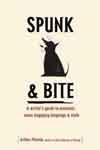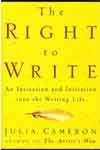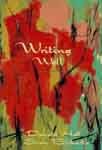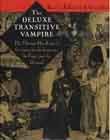Here are my recommendations for books on writing. You’re sure to find a title here to please you, on topics ranging from grammar, to style, to inspiration. And while you’re looking, don’t forget to check out my own book on writing!
In the interest of full disclosure I need to tell you that if you buy one of these books through the links below I will receive an infinitesimally small premium from Amazon. Perhaps, if I’m lucky, it will be enough to buy me a book. More likely it will allow me to buy cup of coffee. Thanks for the joe!
Bird by Bird. By Anne Lamott.

My favourite book of hers, however, is a book of advice about writing, called Bird by Bird. Among other merits, it shows how Lamott is one of the best — and funniest — metaphor-builders in the business.
Take a look at these:
“The first poem I wrote that got any attention was about John Glenn…The teacher read the poem to my second-grade class. It was a great moment; the other children looked at me as though I had learned to drive. (page xiv)
“My students are miserable when they are reading an otherwise terrific story to the class and then hit a patch of dialogue that is so purple and expositional that it reads like something from a childhood play by the Gabor sisters.” (page 64).
“Writing is about hypnotizing yourself into believing in yourself, getting some work done, then unhypnotizing yourself and going over the material coldly.” (page 114)
The book’s title comes from an incident in Lamott’s childhood. Her 10-year-old brother had had three months to write a report on birds for school but left it until the night before it was due. He came to the kitchen table in tears, overwhelmed by the amount of work. His father put his arm around the boy and said, “Bird by bird, buddy. Just take it bird by bird.”
Excellent advice. Even though Bird by Bird is ostensibly about fiction writing, Lamott’s elaxed, informal style, and her message — write, don’t judge yourself — make it an object lesson in how to write non-fiction.
DETAILS: Bird by Bird: Some Instructions on Writing and Life. By Anne Lamott. Published by Anchor Books, 1995, 239 pages.
Spunk & Bite. By Arthur Plotnik.

Written with great wit, and divided into eight sections — Flexibility, Freshness, Texture, Word, Force, Form, Clarity, and Contemporaneity — Spunk questions the famous duo’s most cherished rules of writing. In fact, he challenges them with such force and verve that, soon, you will begin to see cobwebs forming around old Strunk and White’s ears and dust motes dancing in the air. (It’s a measure of the book’s power that I’m willing to tolerate, albeit briefly, the awful word “contemporaneity”).
To give you the book’s flavour, let me quote what Plotnik says about adverbs:
In The Elements of Style, Strunk and White considered such intensifiers as very and pretty to be “the leeches that infest the pond of prose, sucking the blood of words.” Avoid their use, they ruled.
I would say avoid unrelenting use, but do not throw out the pond water with the leeches. Well, maybe I wouldn’t say that. I would say this: Intensifiers run in the blood of natural speech; they might be seen, if not as red cells, then as the leukocytes that help defend against fancy-schmancy invaders.
Sometimes replacing stock intensifiers with erudite vocabulary can sound labored or arcane — too writerly. “If it sounds like writing, I rewrite it,” Elmore Leonard once advised. You may not want to lose the honesty and gestural quality of ordinary speech.
So instead of writing She sensed something very bad — very bad, indeed, should you write She sensed something execrable? In most contexts, probably not. Save power vocabulary for when its distinctive force is needed — which will be often enough — or for when a narrator’s voice demands it. Streams of high-performance words can burden the reader, clot the flow.
Isn’t that wonderful writing at the service of a compelling argument?
Spunk and Bite is not a “how to write” book — it assumes a basic facility with language. And it’s not a manual, despite its excellent and thorough index. But it’s a book filled with wise advice, many belly-laughs and much inspiration. I plan to re-read it at least once a year — and to dip into its pages from time to time as a form of recharging my writing batteries.
DETAILS: Spunk & Bite: A writer’s guide to punchier, more engaging language & style. By Arthur Plotnik. Published by Random House, 2005, 263 pages.
The Right to Write. By Julia Cameron.

I must confess, the book seemed surrounded by a negative force-field. Every time I tried to pick it up, I became utterly enervated. The layout of the book (text too close to the spine), the dull chapter headings (e.g. “Recovering a sense of integrity”) and the language of the book (very much in the 12-step genre) made me want to run screaming in the opposite direction. Still, I was curious to figure out why Julia Cameron was so popular and decided to dip into another of her books, The Right to Write.
Overcoming my native dislike for titles so relentlessly cute, I pressed on and was amply rewarded. This little book is wonderful. Even though it’s intended more for those who wish to fall on the “creative” side of the writing equation, it has many tips that anyone who puts their fingers to the keyboard can use. Each of the 43 very short chapters tackles one writing idea and offers an exercise, which you’re free to ignore if you wish. The writing is bright and lively — sprightly, almost.
Most of all, Cameron provides a compelling argument for writing each morning — although I have such unreadable penmanship I can never bring myself to do it by hand, as she suggests. I also like the way she argues for the importance of writing, even if it never goes further than your own private notebook. This book would be a terrific gift for anyone who is “afraid” of writing — most especially for anyone who had an unwritten novel moldering away inside.
DETAILS: The Right to Write: An Invitation and Initiation into the Writing Life. By Julia Cameron. Published by Tarcher, 1999, 256 pages.
Sin and Syntax. By Constance Hale.

I like this book because it covers more than grammar — and because it’s funny and flexible. Hale is not the kind of gal who’s going to get her knickers in knot over rules. In fact, she’s all for breaking them (the catch is that you need to KNOW you’re breaking them.) She’s also cool, at least as far as aging baby boomers are concerned: She parses Charlotte Bronte next to Muhammad Ali; she quotes Bob Dylan in her discussion of the verb “lay” and Dr. Seuss in her examination of rhyme and onomatopoeia. The book also has the best explanation of who vs. whom I’ve ever seen in print. (pages 163 to 164.)
Hale is a former editor of Wired Magazine (and also the author of Wired Style a book that Newsweek described as “The Chicago Manual of Style for the new Millennium”).
I like the way the book is divided into three main parts with a set of chapters devoted to various parts of speech — nouns, pronouns, verbs, etc. — a set to sentences, and a set labeled “Music” covering voice, lyricism, melody, rhythm.
Now I have to tell you, back when I was in grade 6, Sister Mary Rosa never felt rules were made to be broken. Nor did she care to hear about “music” in grammar class. That Constance Hale does, makes her my hero.
DETAILS: Sin and Syntax: How to Craft Wickedly Effective Prose. By Constance Hale. Broadway Books, 2001, 320 pages.
Writing Well. By Donald Hall and Sven Birkerts.

As well as dissecting the mechanics of writing, the authors also argue passionately for reading well. I must confess that I’m a sucker for this line of reasoning. Reading well, of course, is the precursor to writing well, but Hall and Birkert make the point especially eloquently:
When we are writing, our ears are perhaps our most delicate, and valuable, piece of equipment. We acquire a good ear by reading and rereading the great masters until their cadences become part of our minds. The stored memory of a hundred thousand sentences becomes the standard of our own ear, just as all the sentences we have ever heard pattern all the sentences we will speak. Craftsmanship comes from studying the accomplishment of the past and then practicing to equal it. (page 160)
The book’s slightly patronizing tone (a product, I think, of the authors’ choice of the second person plural) eventually wearied me. And the exercises at the end of each chapter lent it a schoolish air. But the book’s content is so solid, I have to give it two thumbs up.
A final warning: Be aware that this book is similarly titled to the excellent (and more famous) William Zinsser title, On Writing Well.
DETAILS: Writing Well. By Donald Hall and Sven Birkerts. Published by Longman, 1998. 382 pages.
Weinberg on Writing by Gerald M. Weinberg.

On her advice, I bought the book and was absolutely charmed. Weinberg’s argument is that good material lies all around us and that our job as writers is to collect it for future use. His central and oddly compelling metaphor is that writing is like building a fieldstone wall. That is, you collect “stones” (or stories) as you wander through life and you save them for when you might need them for building (writing). The trick, of course, is to remember to do the collecting and to have a decent retrieval system.
If you’re the type of person who makes a habit of reading about writing, you’ll know that many writing teachers are disciplinarians — strict and authoritarian. Weinberg, on the other hand, is what I like to call a “generous” teacher. Here he is on fieldstones:
“…some of you might be saying to yourselves, ‘But the stones that are interesting to me are not worthy enough for others to read.’ One of my students asked me what I would answer to that statement, probably expecting me to argue that it wasn’t true. But I can’t argue that way. It may well be true, but so what? Suppose you manage to produce an article or book that contains not a single stone that’s of interest to anyone else. What’s the worst thing that can happen? (Stop and think about it.)”
So, perhaps one question remains: Can a corporate writer use this method, which might seem a bit airy-fairy or perhaps better suited to fiction writing?
As I read the book, I recalled the time I had to write a speech for a certain nameless CEO. He was one of those impossibly “dry” individuals and much as I laboured to engage him and draw him out, I couldn’t get anything other than platitudes. Speaking to him was like interviewing a brick. Ultimately, I realized that the man didn’t have a single story in him (not even about his kids!) and so I peppered the speech with relevant business-related anecdotes I had gathered on my own.
I felt like a bit of a failure at the time, but now I realize I was DOING THE RIGHT THING! Without being conscious of it, I was using fieldstones. And I can testify that the system works — especially when you’re desperate.
DETAILS: Weinberg on Writing: The Fieldstone Method. By Gerald M. Weinberg. Published by Dorset House, 2005, 194 pages.
The Transitive Vampire. By Karen Gordon.

The book has since been re-released in a “deluxe” edition, with a new subtitle, but it has retained its delightfully camp and quirky style. The design conceit is that it is illustrated with line drawings of dragons, gargoyles and, yes, vampires. The drawings are quite serious but the captions are just plain silly. For example, what looks like a woodcut of a young woman firing an arrow at a young man carries the caption: “She incorrigibly gave herself over to idle and lascivious pleasures.”
But it’s clear the author knows her stuff. See how eloquently she defines and describes verbs: “The verb is the heartthrob of a sentence. Without a verb, a group of words can never hope to be anything more than a fragment, a hopelessly incomplete sentence, a eunuch or dummy of grammatical expression. No verb can parade around without a subject, which can be stated openly or simply implied. Even if a sentence is only one word long, as in a command such as Scram!, the subject is understood to be you; here the verb holds the whole thing together, carrying the burden of the meaning all the way through to the exclamation point and into the reader’s head.”
Read, enjoy, learn.
DETAILS: The Deluxe Transitive Vampire : A Handbook of Grammar for the Innocent, the Eager and the Doomed. By Karen Gordon. Published by Pantheon, 1993 (updated edition), 192 pages.
If You Can Talk You Can Write. By Joel Saltzman.

I then bought the paperback, which isn’t nearly as funny — the translation to the page sucks out some of the humour. But it’s a whole lot easier to use as a reference. The basic premise of the book is expressed in the title and Saltzman has lots of pithy little anecdotes and metaphors to reinforce the point. Here’s my favourite, on the importance of writing quickly, without judging:
Let me introduce you to the most empowering lesson this book has to offer:
Blah, blah, blah, Blah, blah, blah.
Blah, blah, blah.GOLD!
In other words, the more you “talk” on paper – without stopping to judge or criticize yourself – the better your chances of stumbling onto something good. Then you can go back and polish, or edit, it later – after you’ve found it. You’re like a prospector panning for gold, diligent and methodical, sifting, perhaps through many pans of sand before you find your first spec of gold. (p 14).
This is an excellent little book for anyone who suffers from any sort of writer’s block. I highly recommend it.
THE DETAILS: If You Can Talk You Can Write: A Proven Program to Get You Writing and Keep You Writing. By Joel Saltzman. Published by Warner Books, 1993. 190 pages.
